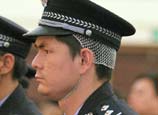
Besides Famen Temple, a number of other well-known sites such as Huangshan Mountain, Jiuhua Mountain and Tianzhu Mountain use the same discount plan.
Emei Mountain, a well-known hiking spot in Sichuan province, lowered its ticket price from 185 yuan to 165 yuan, but a few months prior to this, it raised its peak season entry fee from 150 yuan to 185 yuan, and from 90 yuan to 110 yuan for the off-peak season.
Ding Yunyong, director of Zhangjiajie's tourism bureau, said it's not a good idea for scenic spots to lower ticket prices on peak days.
"If these places already receive a lot of visitors, then lowering the ticket price will only attract more, which in turn lowers the quality of service they can provide," he said.
"If a scenic spot lowers its ticket price on days when most people in the nation choose to travel, people will swarm to it."
Ding said the cost per person to travel for three days throughout Zhangjiajie's scenic area of 264 square kilometers was around 240 yuan, which he said was reasonable, since this includes traveling from one location to another.
In expert's eyes, lowering ticket prices at tourism sites, especially scenic and historic spots, is a tendency that the Tourism Law proposes.
"These sites mostly use public resources and should gradually lower their prices," Zhan said.
"However it is not practical for all sites, especially hotspots with mostly private investment, to lower ticket prices," she said.
"Reasons can include curbing visitor numbers and ensuring adequate economic benefits."
An expert who refused to be identified said that it's common that local governments rely on charging more for tickets to scenic areas.
"Where there is beautiful natural scenery there is usually a lagging economy. Tourism is almost the only industry that brings them significant financial benefits," the expert said.
"The central government should work out how to compensate these areas if they turn to developing other industries," he said.
 |
















 Different walks of life in China : Labor Day
Different walks of life in China : Labor Day


![]()
